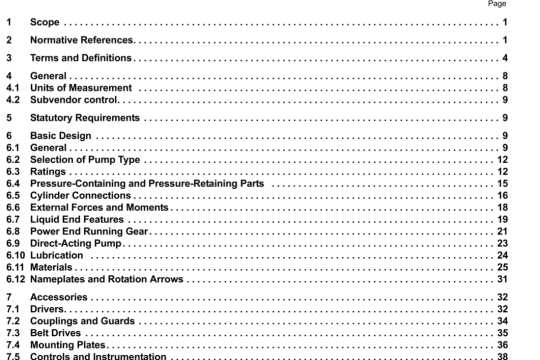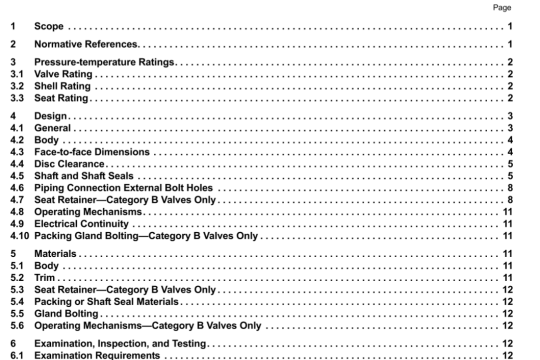API RP 551:1993(2007) pdf download
API RP 551:1993(2007) pdf download.Process Measurement lnstrumentation.
This section discusses recommended practices for the installation and general application of the more commonly used instruments and devices for indicating. recording. and controlling the liquid and solid levels and liquid—liquid interface levels normally encountered in petroleum refinery processes.
A wide variety of level instrumentation is currently available. Selection and proper installation depends on a number of variables, such as (a) the type of vessel, fluid, or material involved (namely, solids, granules, liquids, or a liquid—liquid or liquid-foam interface). (b) process conditions (namely, pressure. temperature. specific gravity, boiling point, viscosity, and pour point), (c) what the instrument is to accomplish (monitoring, on -oft or modulating control, or alarm), and (d) whether the signal is to be electronic or pneumatic.
Six types of instruments are covered:
a. Locally mounted indicating gauges (see 3.3). including tubular gauge glasses. armored gauge glasses. and magnetic gauges.
b. Level transmitters (sec 3.4), including dispbcemcnt. diikrential-pressurc. hydrostatic-head. nuclear, ultrasonic, and capacitance/radio- frequency types.
c. Locally mounted controllers (see 3.5). including displacement. ball-float, and differential-pressure types.
d. Level switches (sec 3.6).
e. Tank gauges (see 3.7).
f. Accessories (see 3.8). including scal. purges, and weather protection.
3.2 General
3.2.1 INTRODUCTION
Certain general procedures, practices, and precautions apply to practically all of the instruments discussed in this section. Where applicable, the material discussed in 3.2.2 through 3.2.9 should be considered a pan of each of the subseslueni discussions.
3.2.2 ACCESSIBILITY
All locally mounted liquid level instruments, including gauge glasses. should be readily accessible from grade. platforms, fixed walkways, or fixed ladders. For maintenance purposes. rolling platforms are frequently used when free access is available in the area below the instruments.
For general service, externally mounted level devices are preferred, since they permit access for calibration and maintenance. Internally mounted devices are therefore usually limited to services in which external devices cannot be used or to services in which a shutdown for maintcnance is accepiahic.
3.2.3 READABILITY
In all applications in which a liquid level is regulated by a control valve, some indication of the level —a gauge glass. receiver pressure gauges. or another indicator—should he clearly readable from the control-valve location to permit manual control when neccssaiy. Such level indication at the valve is not necessary if the control system cannot be operated manually from the control-valve station.
Level-indicating instruments should be located on vessels so that the instruments arc visible from operating aisles.
3.2.4 CONNECTiONS TO VESSELS
Level-insuument connections must be made directly to vessels and not to process flow lines or noiiles (continuous or intermittent) unless the fluid velocity in the line is less than 2 feet (0.6 meter) per second.
Connections and interconnecting piping should he installed so that no pockets or traps can occur. Where pockets arc unavoidable, drain valves should be provided at low points. Tbe minimum recommended sue for drain valves is 4 inch.
3.2.5 MULTIPLE-INSTRUMENT MOUNTING
When two or more instruments, including gauge glasses, are required for any application (such as a gauge glass and controller or a gauge glass and alarm switch), the instruments should he mounted so that the number of openings in the vessel is kept to a minimum. Suggested methods arc covered in 3.3.3.3 and 3.4.2.3.
Block valves are generally used between a vessel noiilc and a standpipe.
3.2.6 BLOCK VALVES
3.2.6.1 Material
The materials of construction, rating. and type of connections for block valves must conform to the specifications for the equipment to which the valves are connected. This applies to all block vahes. whether installed directly on the equipment or on a standpipe that is connected to the equipment.




